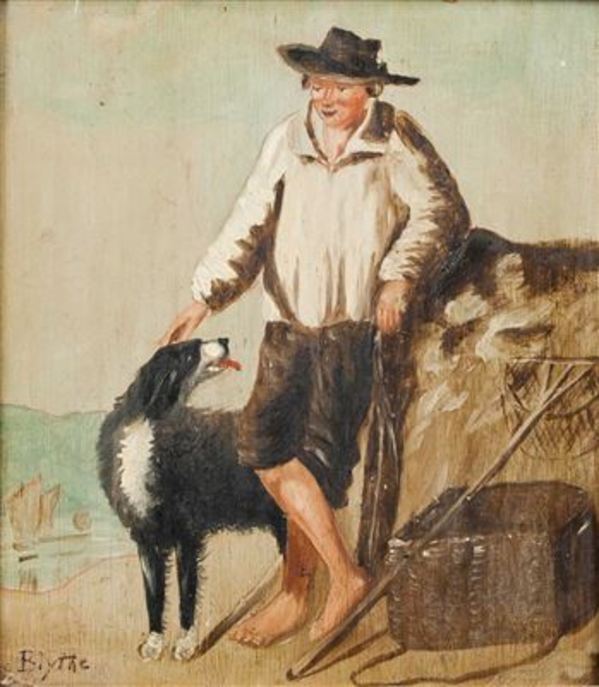-
Artist: David Blythe (American, 1815-1865)
“Blythe was born in 1815 to immigrant Irish and Scottish parents in East Liverpool, Ohio. At age 16, he was apprenticed to Joseph Woodwell, a Pittsburgh wood-carver. He had little formal art training, but an interest in art was encouraged by his proximity to the studio shop of J.J. Gillespie. The store was a meeting place for artists and traveling portrait painters” (1).
“A leading satiric genre painter of his time, David Blythe did work that often commented on the American court system and also depicted poverty-stricken street children” (2).
“In the late 1830s, Blythe visited the East while serving as a carpenter in the navy, and it is believed that the opportunity to view the works of professional painters there stimulated his ambitions. On his return to the region of Pittsburgh and the Ohio Valley, he commenced a career as an itinerant portraitist, and many of these works survive. At the same time, he painted a panorama of the Allegheny Mountains, which he took on tour through Maryland, Pennsylvania, and Ohio, one of the many similar topographical Panoramas that enjoyed great popularity during the 1840s. Blythe’s most sophisticated work is in genre, pictures that show the seamier side of life in Pittsburgh as he knew it. Some, too, may have been inspired by boyhood experiences, and many reflect the poverty of his adult existence. Blythe painted a large group of pictures of young street urchins. These differ markedly from the usual idyllic 19th-century interpretations of childhood, not expecting the street children of John George Brown or even the newsboys of Henry Inman and Thomas Le Clear” (3).
“A strong Union sympathizer, he was much affected by the Civil War, and his greatest output is from this period when he was a sketch artst for the 13th Regiment of Pennsylvania Volunteers. The Battle of Gettysburg" is considered to be one of his masterpieces because of its powerful depiction of battle. The location of that painting is unknown, but a series lauding Abraham Lincoln is in the Museum of Fine Arts Boston” (2).
Blythe’s last years were spent in Pittsburgh; he died in 1865” (1).”
References
1.
Zellman, M. D. 300 Years of American Art. Hong Kong: Chelsea House Educational Communications, Inc.
2.
David Blythe [internet]. [Cited 2015 May 15]. Available from: http://www.askart.com/artist_bio/David_Gilmour_Blythe/21362/David_Gilmour_Blythe.aspx
3.
Baigell, M. Dictionary of American Art. New York: Harper & Row, Publishers; 1979
